It’s virtually unheard of for me to catch a kingbird in full flight (as opposed to take-off or landing) with any kind of image quality but two days ago I finally had some success in that arena.
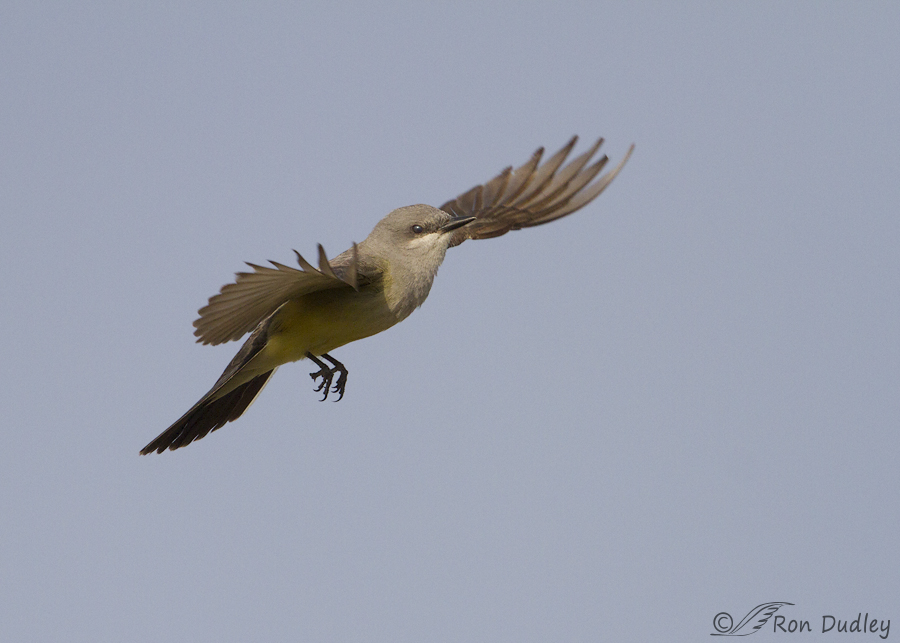
1/3200, f/6.3, ISO 640, Canon 7D, Canon EF500mm f/4L IS II USM +1.4 tc, not baited , set up or called in
This is the male Western Kingbird that I’ve been photographing lately while his mate has been constructing the nest. We spent only a few minutes with them because it was Saturday and the island was crazy-busy with campers, bikers and many vehicles. The nest is close to a road and we didn’t want our presence to bring attention to the nest. The female is now incubating and the male left his nearby perch and hovered over her, perhaps 15 feet above, for about 5 seconds. I quickly fired off a burst and these are some of those images. They aren’t great shots but I found the variety of wing positions and hovering postures to be interesting.
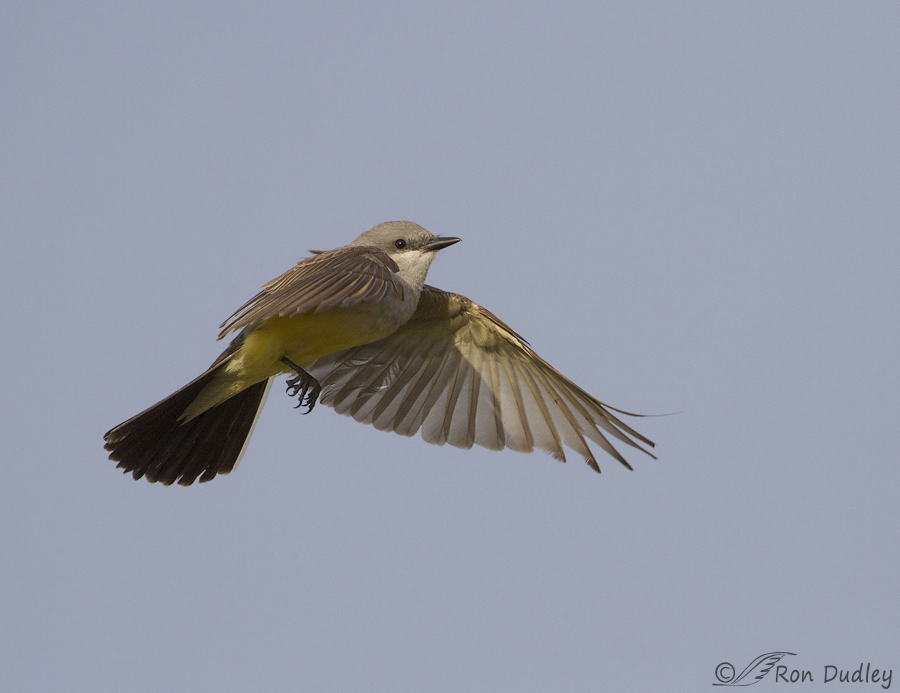
1/3200, f/6.3, ISO 640, Canon 7D, Canon EF500mm f/4L IS II USM +1.4 tc, not baited , set up or called in
The position of his feet are one clue that he was hovering – if he had been in full-on forward flight the feet and legs would have been tucked.
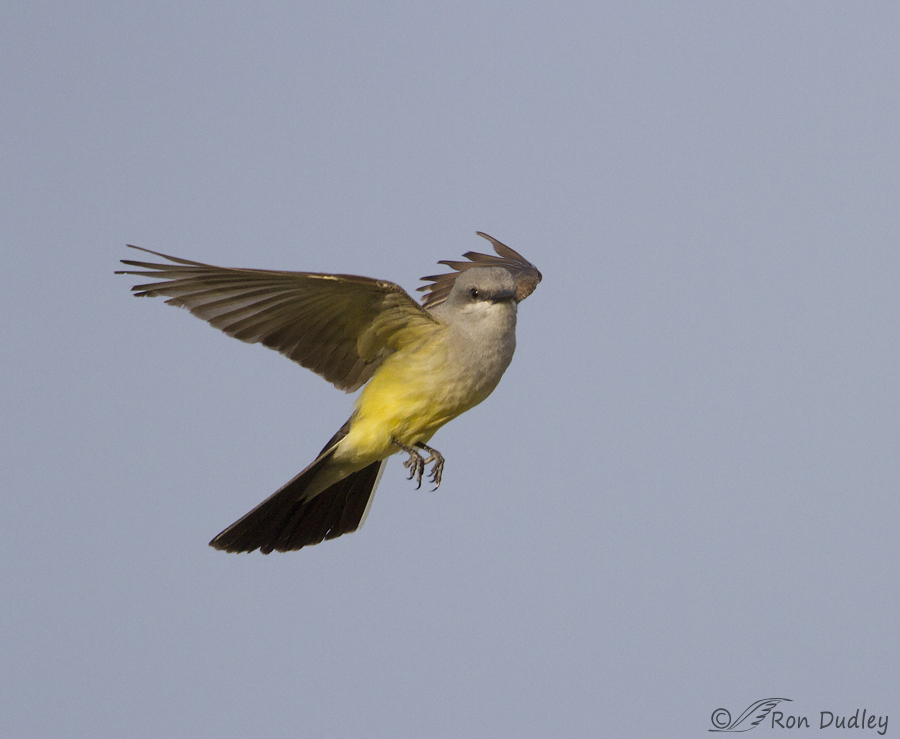
1/3200, f/6.3, ISO 640, Canon 7D, Canon EF500mm f/4L IS II USM +1.4 tc, not baited , set up or called in
The role of the male while his mate is on the nest is to watch for threats and chase off other birds and I suspect he was checking things out in every direction before he flew off to another perch. It wasn’t unusual for him to fly over the nest but this was one of the few times I saw him hover there.
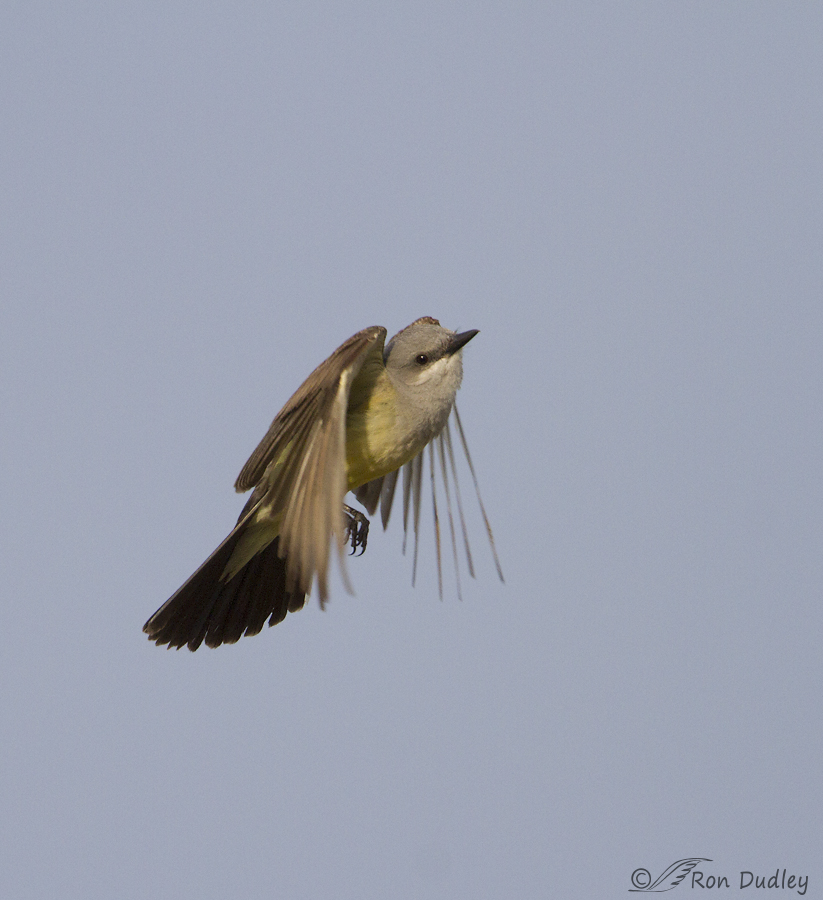
1/3200, f/6.3, ISO 640, Canon 7D, Canon EF500mm f/4L IS II USM +1.4 tc, not baited , set up or called in
I don’t like this image much but the flight posture is especially indicative of hovering. He seems to be looking down at his mate on the nest.
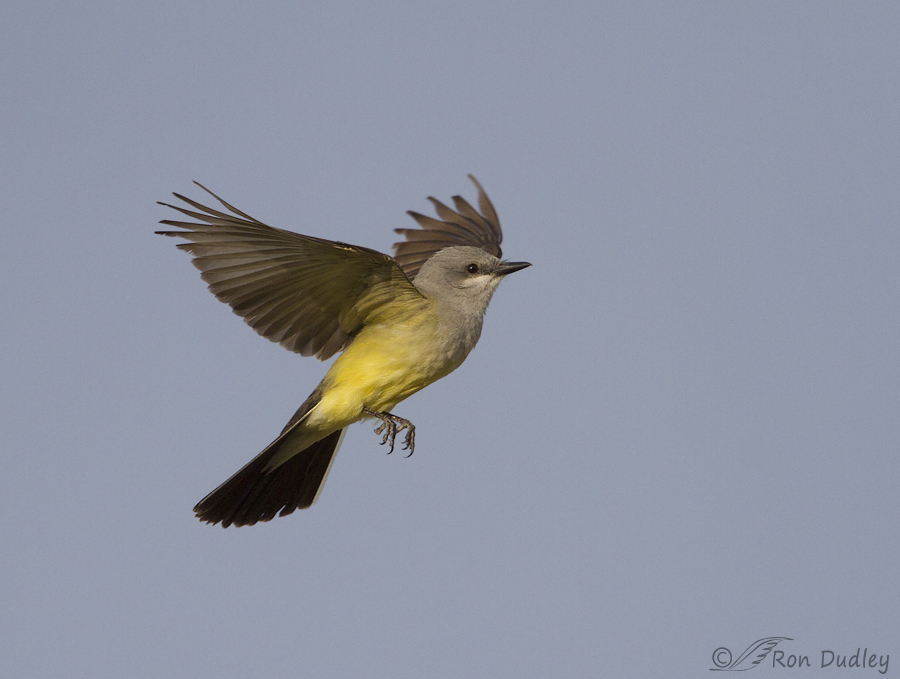
1/3200, f/6.3, ISO 640, Canon 7D, Canon EF500mm f/4L IS II USM +1.4 tc, not baited , set up or called in
This is probably my favorite shot from the burst.
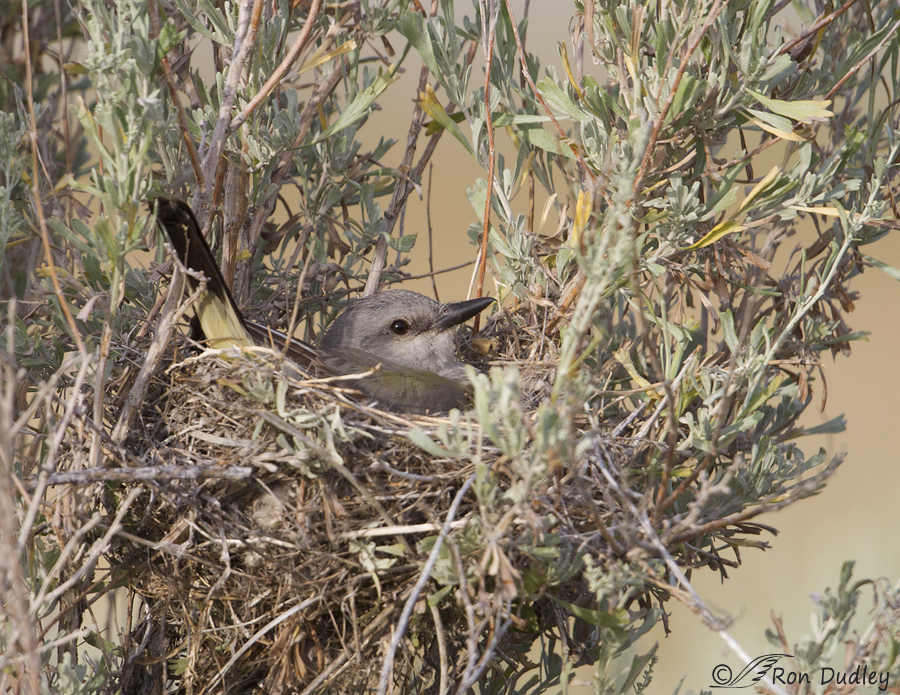
1/1250, f/6.3, ISO 640, Canon 7D, Canon EF500mm f/4L IS II USM +1.4 tc, not baited , set up or called in
All the while his mate was below him performing her genetically prescribed duty (as they both were).
I still worry about these birds. They’re so very close to the road that some folks are likely to eventually notice the nest. Curiosity and ignorance of some humans too often yields unfortunate results for birds. I can only keep my fingers crossed and hope for the best.
Ron


Such beautiful photos of such a happy little couple. I too wish the best for them. Thanks for sharing your wonderful photos with us.
Beautiful series Ron. Kingbird’s are one of my favorite to watch. They are so full of energy, and fly around playfully and chatter a lot with each other. We stopped at the local high school to toss around the softball the other day. Someone left the netting of the batting cage open and a kingbird got trapped inside while its mate frantically flew around outside and chattered st it. My husband held open the door while I walked inside slowly and causiously to not scare it or make it hurt itself and herded the bird to the opening. The first try it was sceptical of my husband but the second try was successful. Its mate met up with it immediately upon release and they flew around each other in tiny circles while chatting up a storm. I feel they were excited to be back together and once more free to fly gracefully together. We did the best we could to secure the netting shut in hopes it won’t happen again.
I love these shots and your comments. We have had western kingbirds nesting in our yard for three years, and the way the male protects the territory is stunning. You captured some great images, and I really appreciate your added comments. You always point out characteristics or traits that I have missed along the way! I love your blog!!!
I am sure he is checking you out at one point. This is a most interesting series and answers my question about hovering. Love seeing the female hunkered down in the nest and hope to see the chicks.Good work, Ron.
I love this series…my favorites are the first, third and last…Why are these not “Great” shots? They look pretty great to me. What am I missing…just curious….I too, will keep fingers, toes,eyes and nostrils crossed that all the babies and their parents make it OK….
Patty, At least to some degree “great” is in the eye of the beholder but the detail in these shots is only marginal because I wasn’t quite as close as I prefer and two of them aren’t tack-sharp. I think these images are fine to document hovering though.
In one, he looks like he is doing a “Dress RIGHT” maneuver.
You’re right, Arwen. Hadn’t thought of that…
Great shots. I hope their work produces some chicks that survive.
Thank you, Dave. I hope so too…
Let us be optimistic. Those two after such hard work certainly deserve that everything turns out for the best.
If you want to love something you need to understand it first and that’s what you do so well. Throught your photos we learn theirs habits and how they behave and then we create a bond that makes us care about.
Thank you Ron for giving us those tools.
I appreciate your thoughtful comment, Jorge. I think you’re right about “understanding” contributing to appreciation.
Having seen a Western Kingbird hovering recently, it’s nice to see photos of it. I like your favorite best, but also like the second photo a lot. Also the one of mama on the nest.
They hover fairly often, Susan but usually it’s while they’re hunting insects.
We will all keep our fingers crossed. Love all these shots and the way you ened the story with the female on her nest. Terrific.
Thank you, Ellen.
I’ll keep my fingers crossed, too. Having your photos that display the movements of the kingbirds so intimately makes me so appreciative of their delicacy and their strength. I’m sure a lot of your readers will be rooting for them!
I suspect that many of us will be rooting for them, Alison. Every time I approach the nest area I’m afraid that I’ll find the nest disturbed or destroyed or the birds gone from the area.
How sensational Ron! You’re the BEST! Thanks for sharing!
Charlotte
Thanks very much, Charlotte.